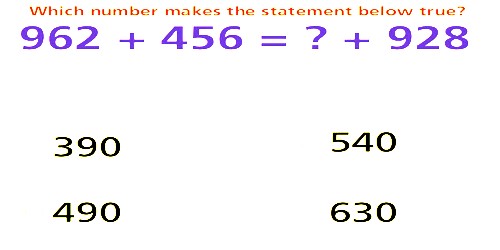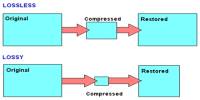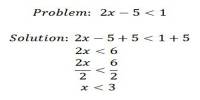Addition Equations
To solve an equation means to find a value for the variable that makes the equation true. Whatever you do to one side of the equation, you must also do to the other side. An equation is a mathematical statement that has an expression on the left side of the equals sign (=) with the same value as the expression on the right side. An example of an equation is 2 + 2 = 4.
One of the terms in an equation may not be known and needs to be determined. The unknown term may be represented by a letter such as x (e.g. 2 + x = 4). The equation is solved by finding the value of the unknown x that makes the two sides of the equation have the same value.
Use the subtractive equation property to find the value of x in addition equations. The subtractive equation property states that the two sides of an equation remain equal if the same number is subtracted from each side.
Example:
5 + x = 12
5 + x – 5 = 12 – 5
0 + x = 7
x = 7
Check the answer by substituting (7) for x in the original equation. The answer is correct if the expressions on each side of the equals sign have the same value.
5 + 7 = 12
Explanation:
Addition equations with 3 digit numbers
An equation is a mathematical statement that has an expression on the left side of the equals sign (=) with the same value as the expression on the right side. An example of an equation is 222 + 222 = 444.
One of the terms in an equation may not be known and needs to be determined. The unknown term may be represented by a letter such as x (e.g. 222 + x = 444). The equation is solved by finding the value of the unknown x that makes the two sides of the equation have the same value.
Use the subtractive equation property to find the value of x in addition equations. The subtractive equation property states that the two sides of an equation remain equal if the same number is subtracted from each side.
Example:
500 + x = 1200
500 + x – 500 = 1200 – 500
0 + x = 700
x = 700
Check the answer by substituting (700) for x in the original equation. The answer is correct if the expressions on each side of the equals sign have the same value.
500 + 700 = 1200
Addition equations with 6 digit numbers
An equation is a mathematical statement that has an expression on the left side of the equals sign (=) with the same value as the expression on the right side. An example of an equation is 222222 + 222222 = 444444.
One of the terms in an equation may not be known and needs to be determined. The unknown term may be represented by a letter such as x (e.g. 222222 + x = 444444). The equation is solved by finding the value of the unknown x that makes the two sides of the equation have the same value.
Use the subtractive equation property to find the value of x in addition equations. The subtractive equation property states that the two sides of an equation remain equal if the same number is subtracted from each side.
Example:
500000 + x = 1200000
500000 + x – 500000 = 1200000 – 500000
0 + x = 700000
x = 700000
Check the answer by substituting (700000) for x in the original equation. The answer is correct if the expressions on each side of the equals sign have the same value.
500000 + 700000 = 1200000
Information Source:
















